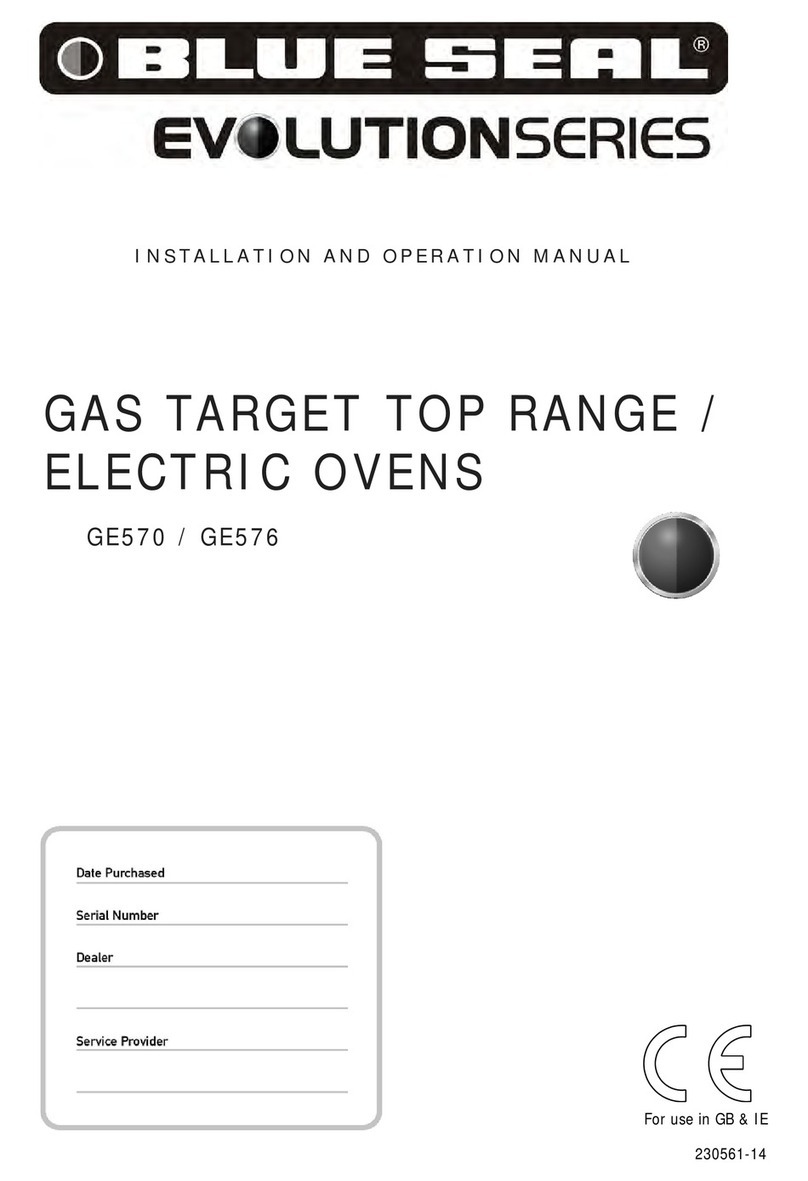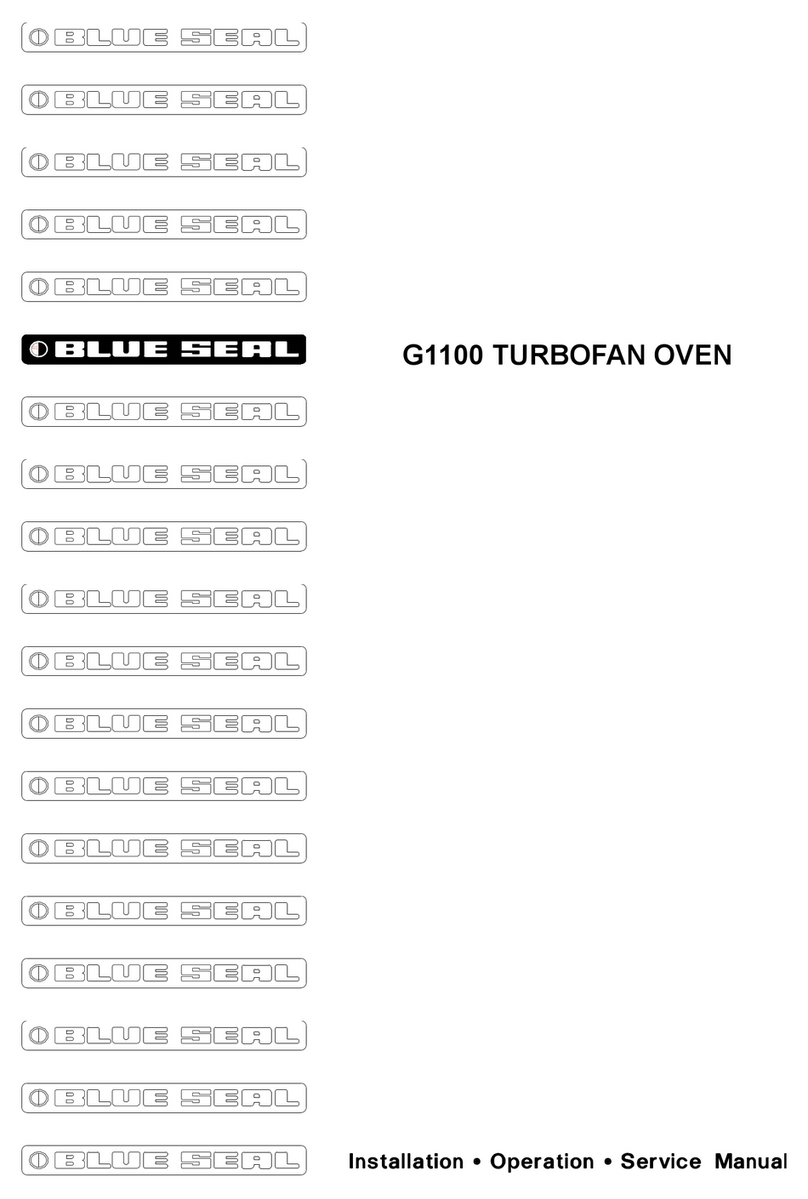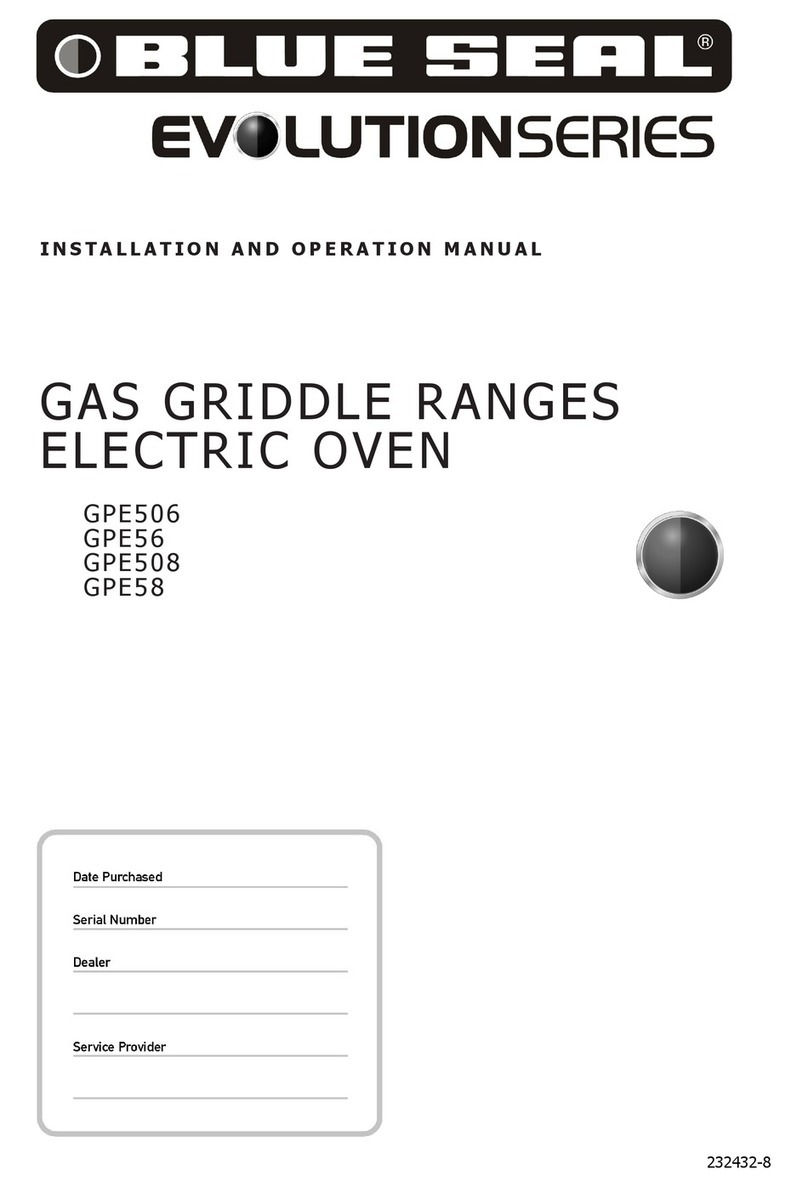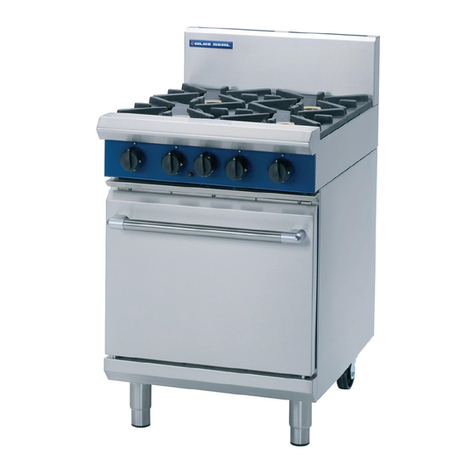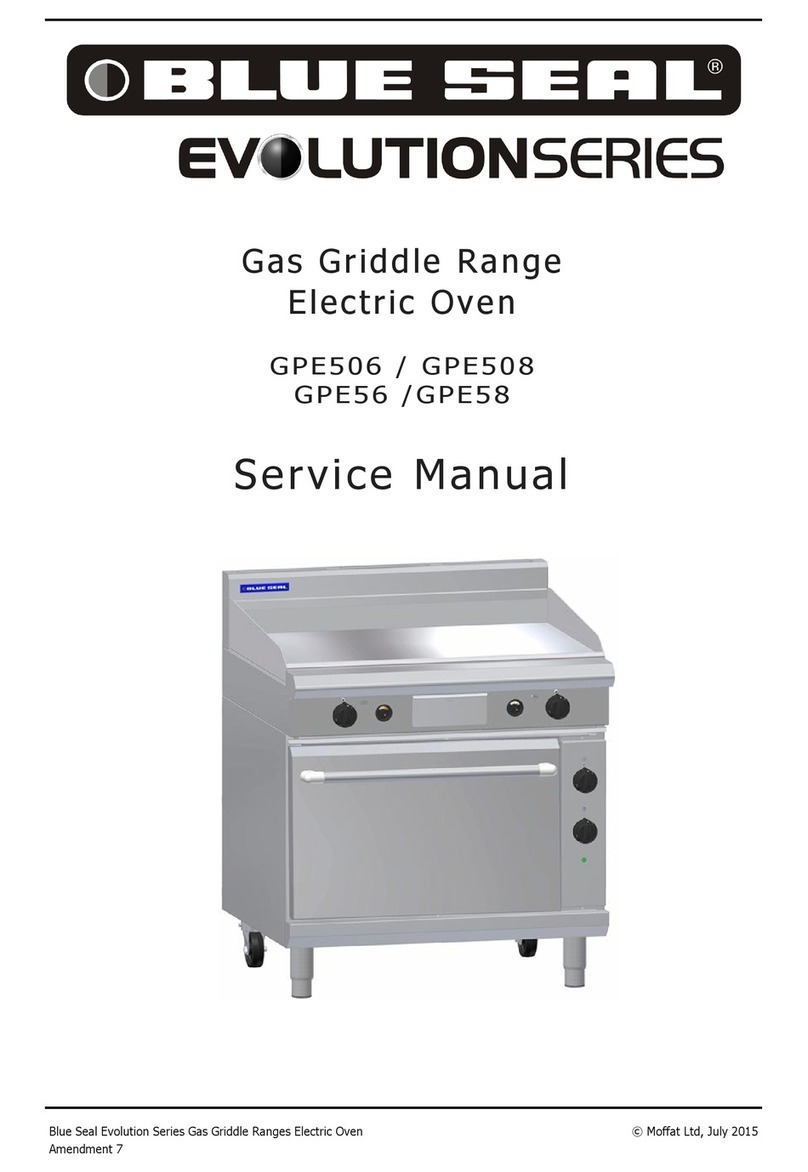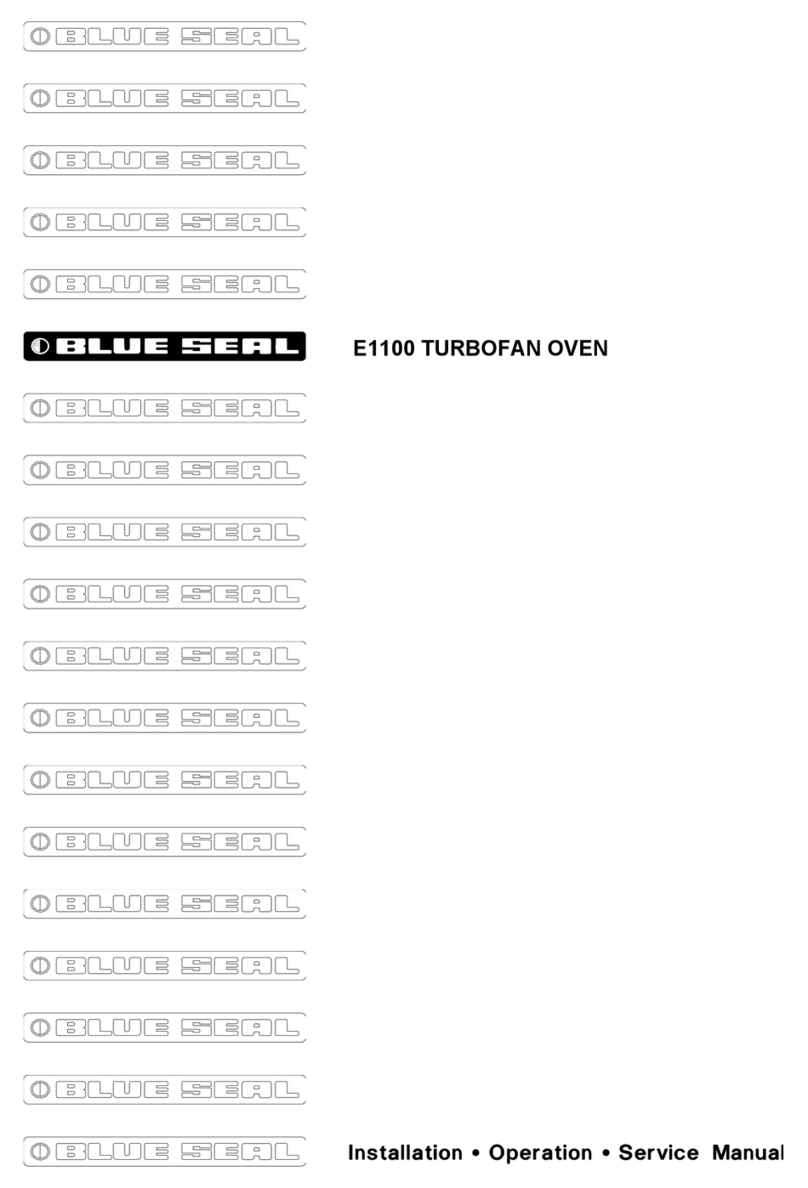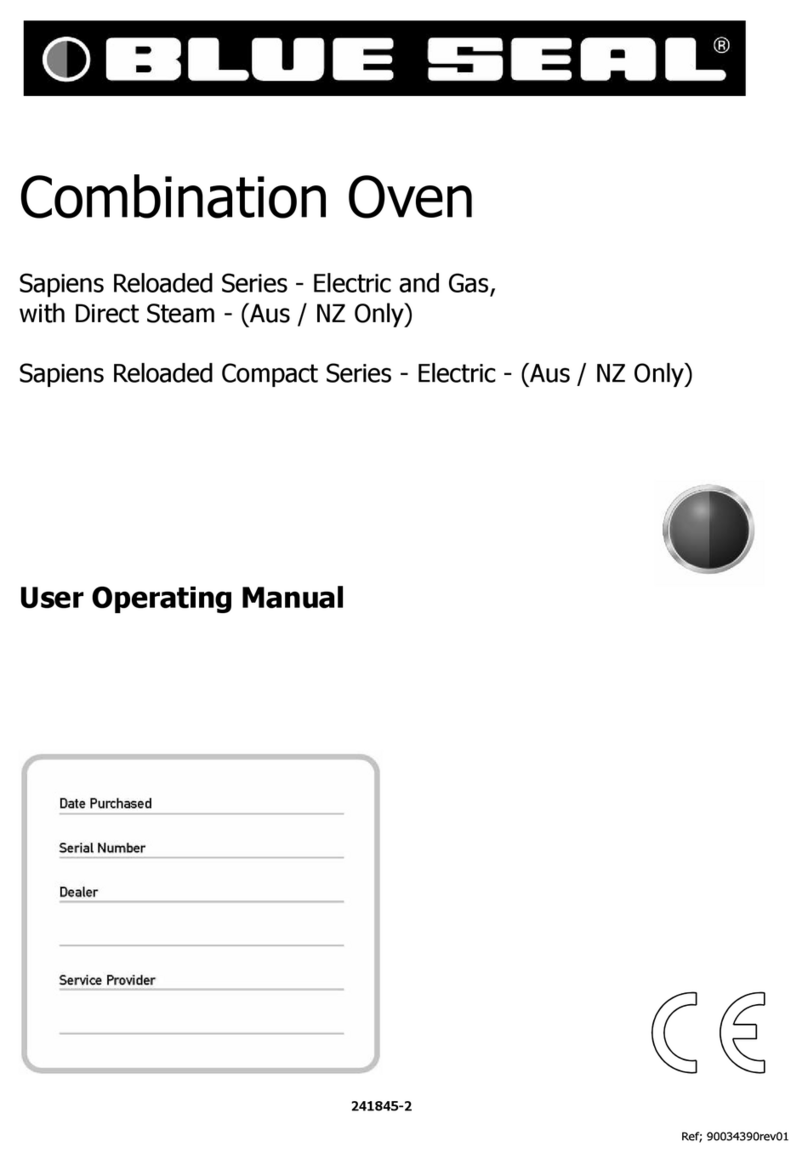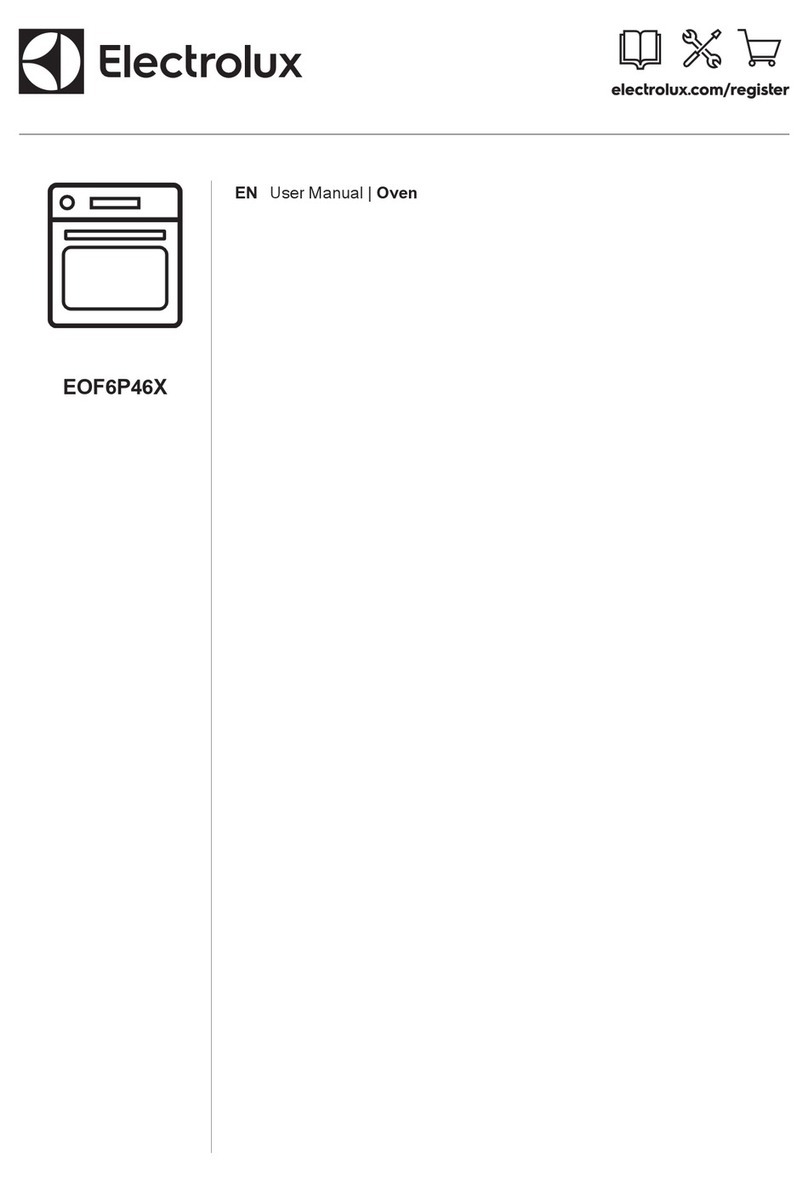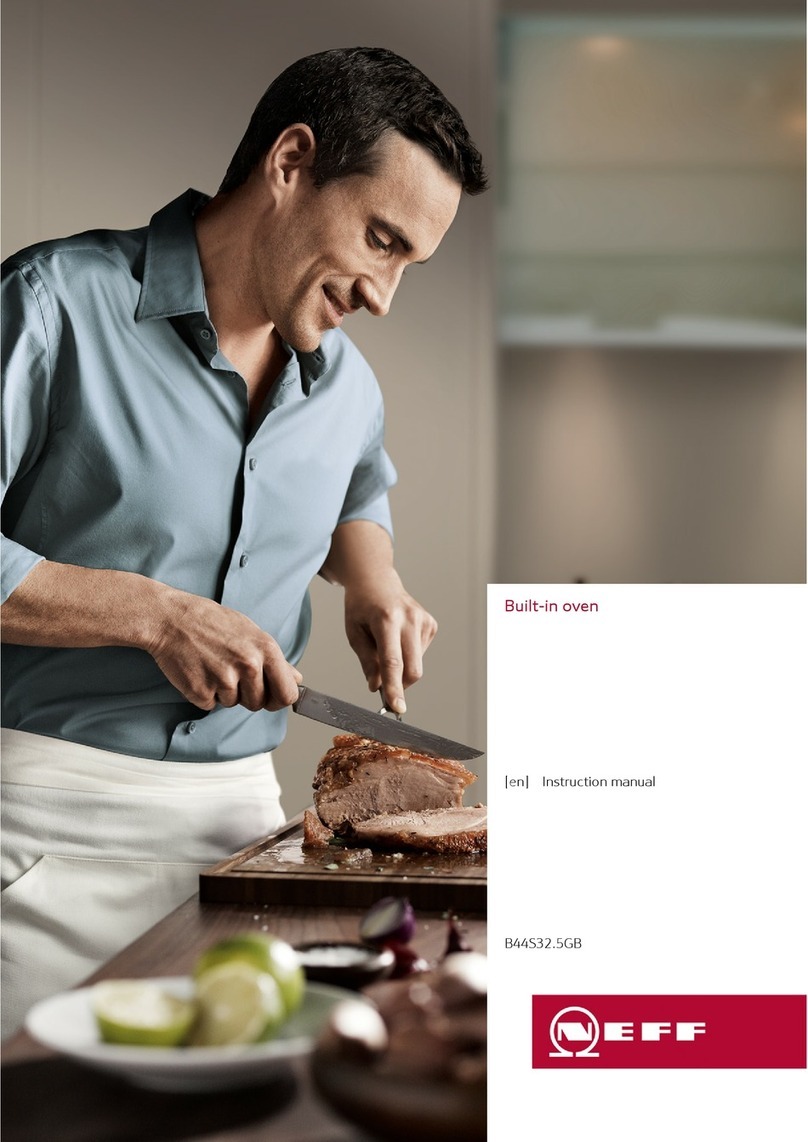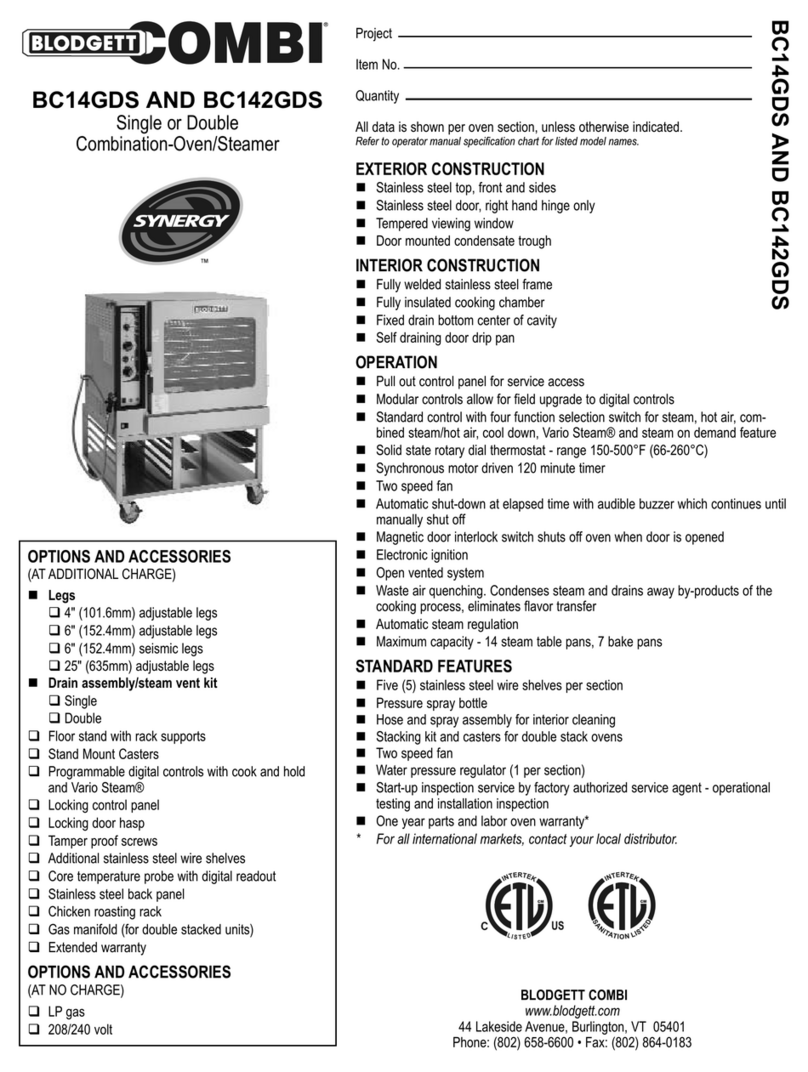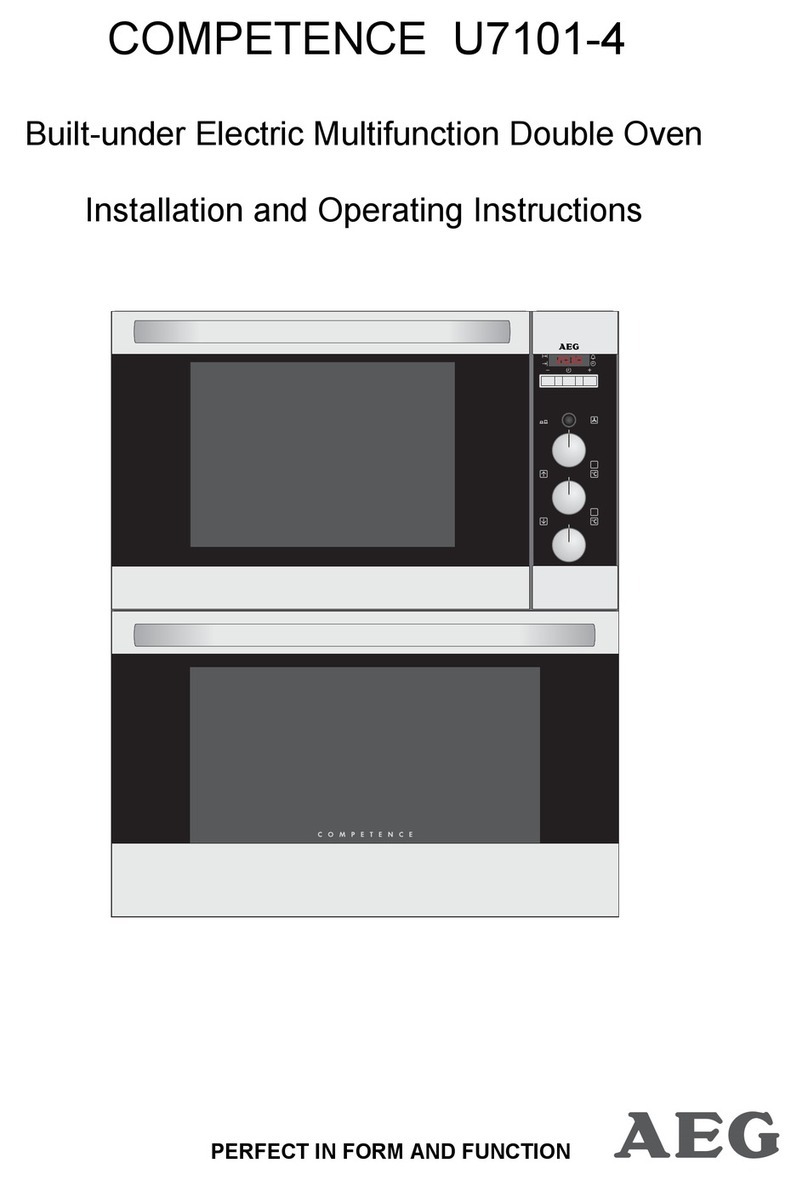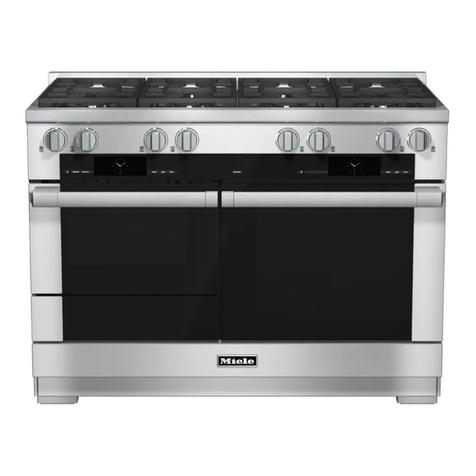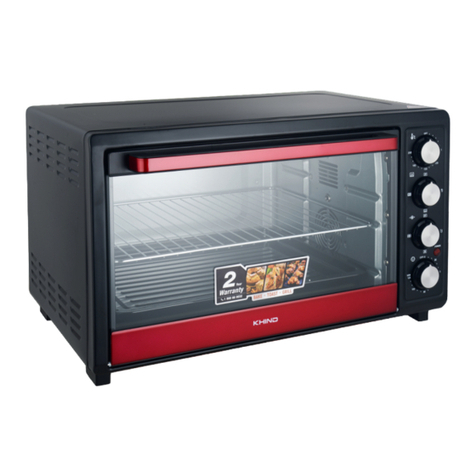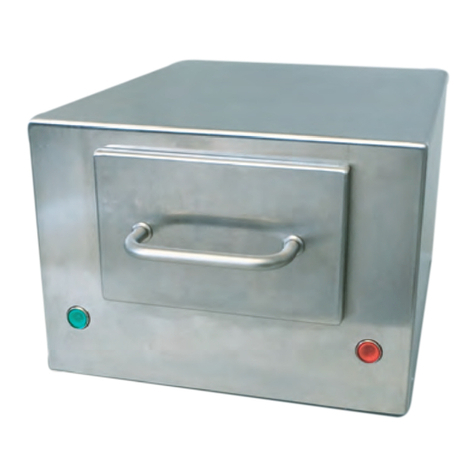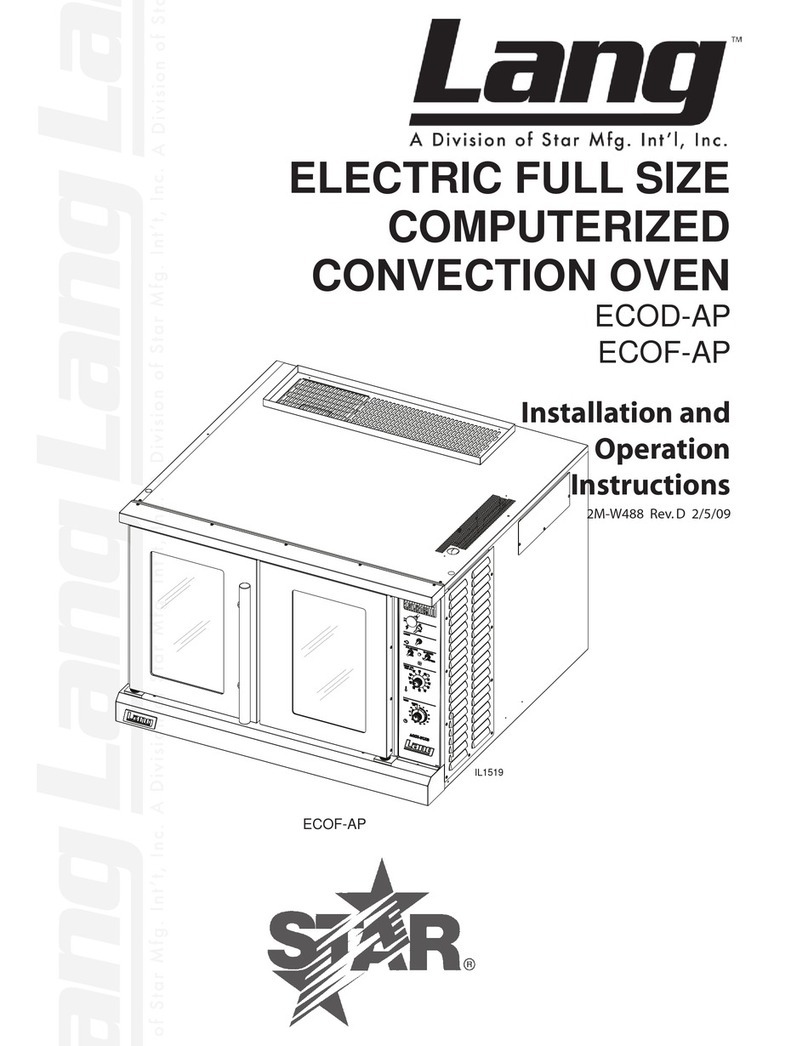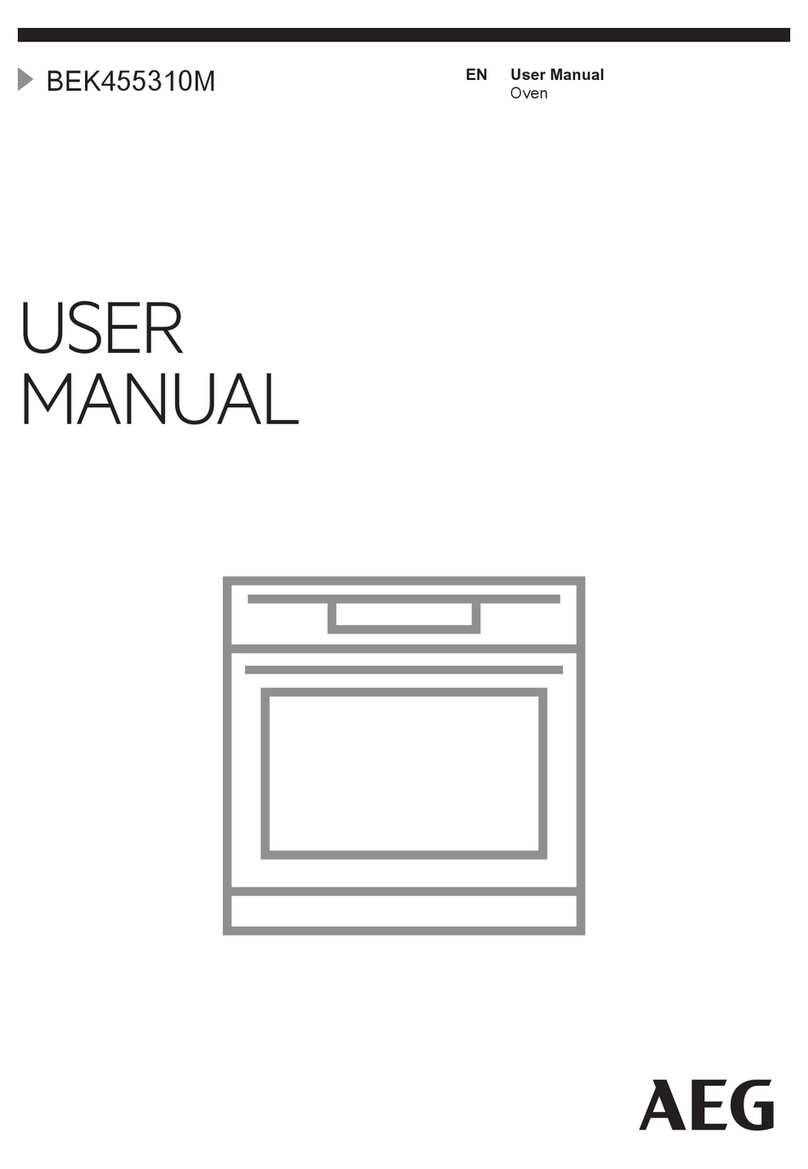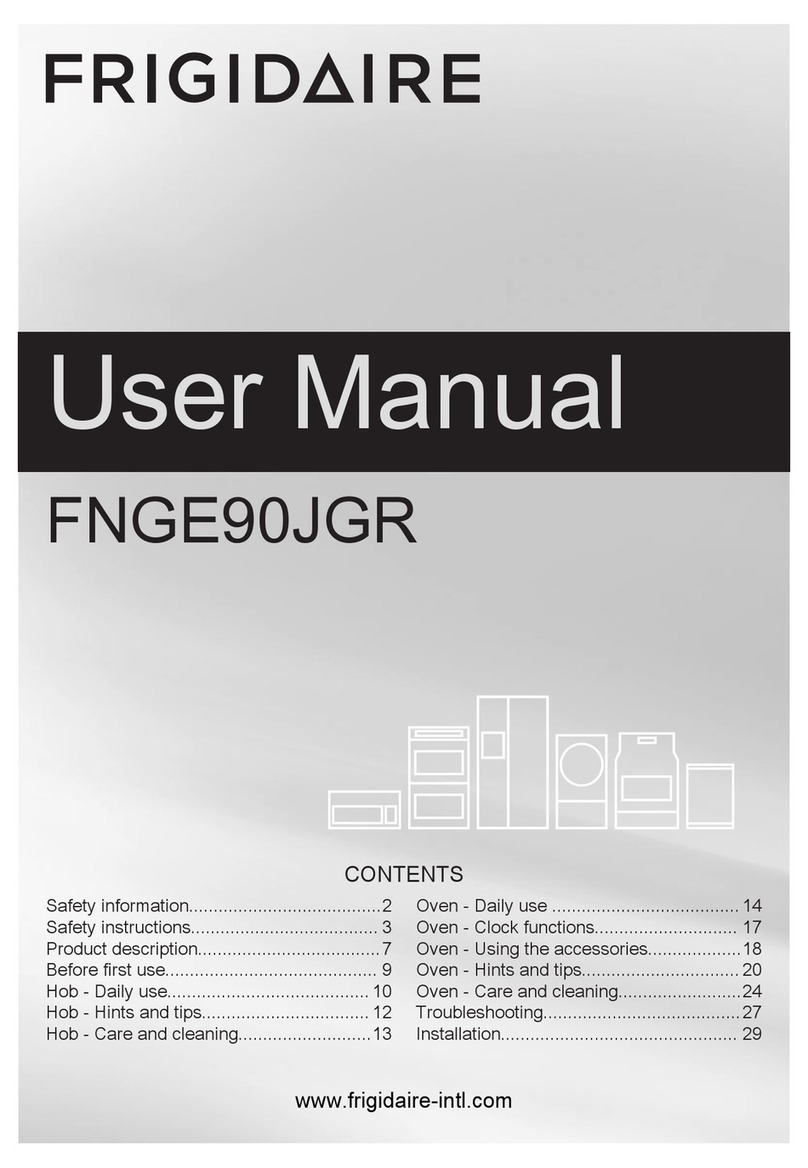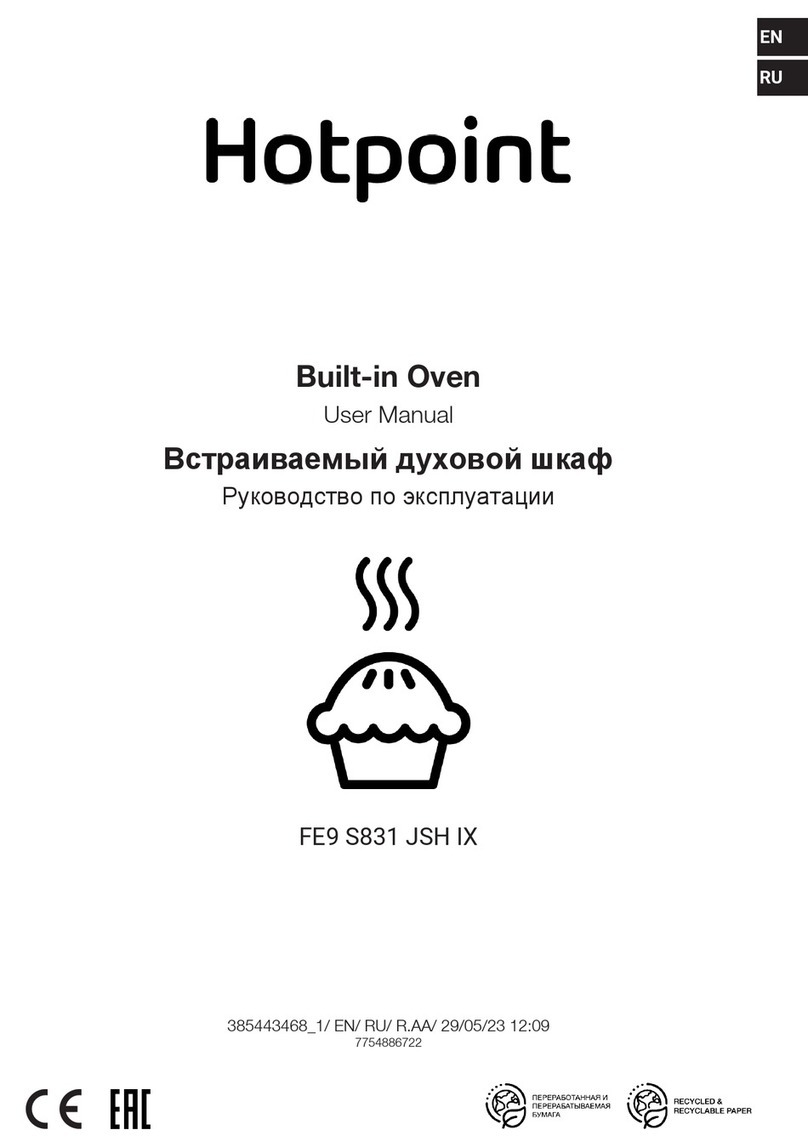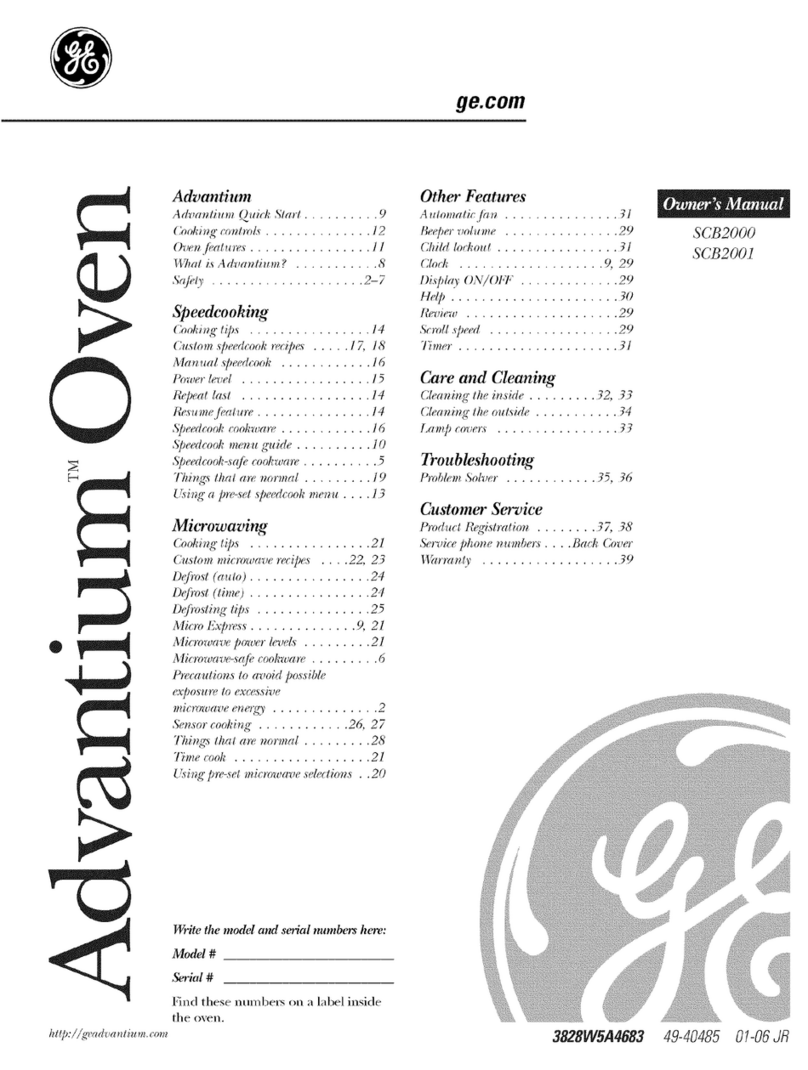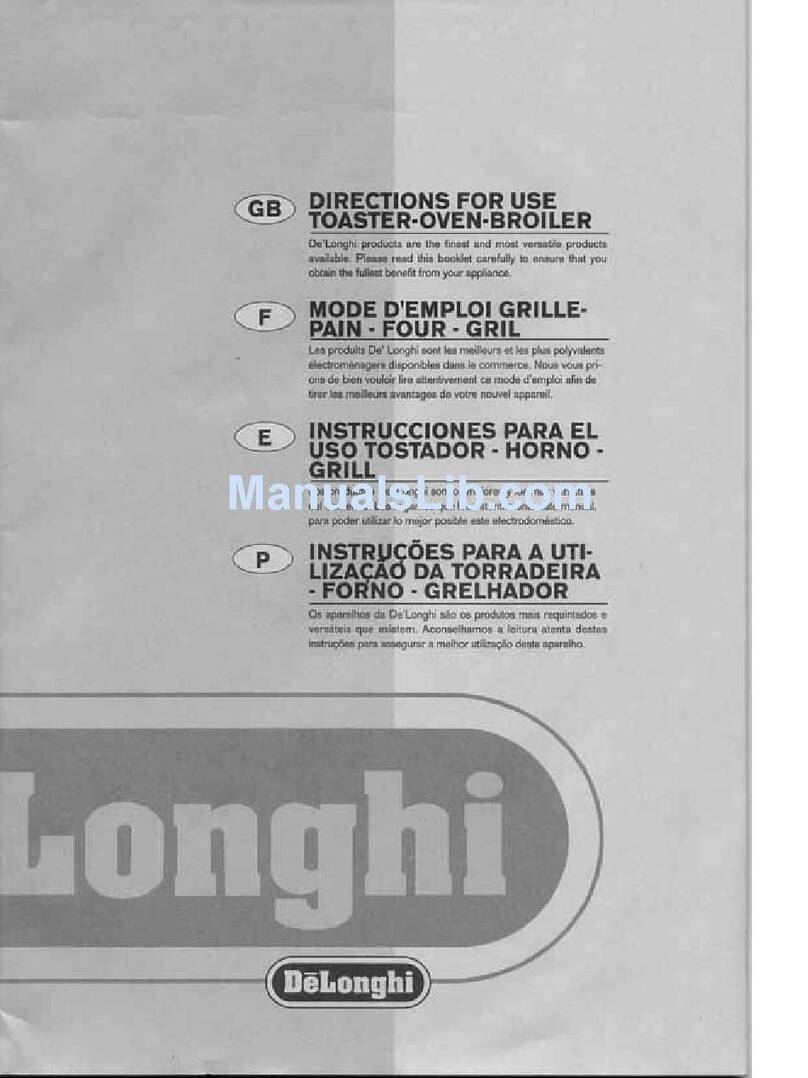-8-
Revision 4/F3591 © Moffat Ltd, August 2004
Installations must be carried out by authorised
persons only. Failure to install equipment to
the relevant codes and manufacturers
specifications in this section will void warranty.
This oven must be electrically grounded in
accordance with local codes.
BEFORE CONNECTION TO POWER
SUPPLY
Unpack and check unit for damage and report
any damage to the carrier and dealer. Report
any deficiencies to your dealer.
Fitting legs
Tilt the oven over on one side and fit both the
front and rear legs to the side now off the
ground. Fit them into the base frame under
the chassis base and secure to the base with
the bolts, spring washers and flat washers
provided. Lift up the other side of the oven, fit
legs, bolts and washers, but do not tighten
yet. Position leg tray (flat side facing up)
between legs and secure with the 4 screws
provided, then tighten all leg bolts. Level the
oven by adjusting the feet.
NOTE: Double units have no leg tray.
Stacking the ovens (Double units only)
Lay the top unit on its side and fit the spacers
provided to the base of the oven.
Lift the top unit onto the bottom unit and
secure around the spacer panel flanges with
self-tapping screws provided. Fit chimneys
over the duct assembly of the bottom unit.
Screw in place and pull down chimney
surrounds onto the duct assembly. Level the
oven by adjusting the feet. (Refer to appendix
A for more detailed stacking instructions).
LOCATION
The following minimum clearances for air
openings, servicing, operation and installation
are to be adhered to:
2. INSTALLATION
WARNING: THIS APPLIANCE MUST BE EARTHED / GROUNDED.
Rear 100mm / 4”
Left-hand side 100mm / 4”
Right-hand side 300mm / 12”
NOTE: 300mm is required at the right hand
side of the oven to allow access to the
circuitry and gas connections. If space is
limited then a minimum of 100mm (4”)
clearance should be allowed for, provided
that the oven can be moved to gain
access.
Position the oven in its allocated working
position. Use a spirit level to ensure the oven
is level from side to side and front to back. (If
this is not carried out, uneven cooking could
occur). The feet/legs used with bench or floor
mounting or provided with stands are
adjustable and will require adjusting in
levelling the unit. It should be positioned so
the operating panel and oven shelves are
easily reachable for loading and unloading.
ELECTRICAL CONNECTION
This E1100 convection oven can be supplied
as a single or twin deck unit. Check that the
available power supply is correct to that
shown on the rating plate located on the right-
hand side panel.
400-415V AC, 50Hz, 3P+N+E, L1 14.5A
L2 14.4A
L3 13.7A
380V AC, 60Hz, 3P+N+E L1 15.9A
L2 15.8A
L3 15.0A
The mains terminal block is positioned at the
rear of the unit. Access is provided by a
detachable panel on the back panel. Each
oven should be connected to a circuit breaker
(or switch and fuses). These should be
mounted on the wall adjacent to the oven and
should be readily accessible and clearly
marked.
Bring the connecting cable up through the
base panel and tighten the conductor strands
securely to the terminal block studs. The
earth screw is located in the base panel next
to the cable entry hole.
WARNING: ALL INSTALLATION AND SERVICE REPAIR WORK MUST BE CARRIED
OUT BY QUALIFIED PERSONS ONLY.
